Taliang Knobby Newt
- March 15, 2024
- 0 comment
Taliang Knobby Newt was first described in the mid-20th century, highlighting its relatively recent recognition in the scientific community. It belongs to the genus Tylototriton, which comprises several species known collectively as knobby or crocodile newts, a nod to their distinctive, rugged skin texture. Phylogenetic studies indicate that Tylototriton species have a complex evolutionary history, with the Taliang Knobby Newt displaying unique genetic markers that underscore its distinctiveness among its congeners.
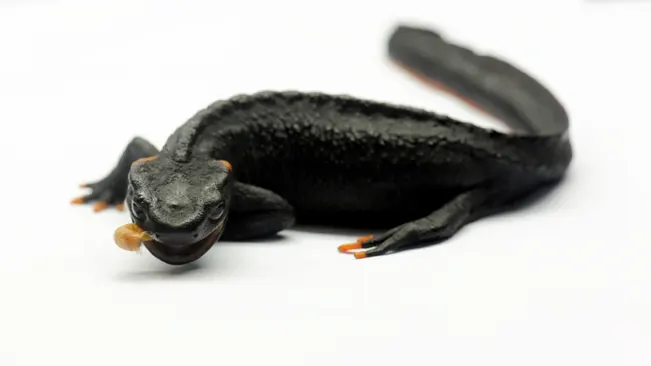
Taliang Knobby Newt Characteristics
| Category | Details |
|---|---|
| Scientific Name | Tylototriton taliangensis |
| Common Names | Taliang Knobby Newt |
| Classification | Kingdom: Animalia, Phylum: Chordata, Class: Amphibia, Order: Urodela, Family: Salamandridae |
| Size | Typically reaches lengths of 10 to 15 cm |
| Weight | Varies with size, generally light due to small size |
| Lifespan | Up to 10 years in the wild, potentially longer in captivity |
| Habitat | Montane and subalpine forests, near cool, slow-moving or stagnant water bodies at elevations of 2,400 to 2,800 meters |
| Distribution | Endemic to the Taliang Mountains in Sichuan Province, China |
| Diet | Carnivorous, feeding on insects, worms, and small invertebrates |
| Behavior | Elusive, primarily nocturnal. Utilizes both aquatic and terrestrial habitats for breeding and feeding |
| Reproduction | Breeds in stagnant or slow-moving waters during the rainy season. Lays eggs in water where the larvae develop |
| Conservation Status | Vulnerable. Faces threats from habitat destruction, pollution, and the illegal pet trade |
| Conservation Efforts | Habitat protection, pollution control, and research into the species’ biology to inform conservation strategies |
| Cultural Significance | Mainly of interest to herpetologists and conservationists for its unique appearance and status as a bioindicator in its habitat |
| Challenges | Habitat destruction, pollution, illegal pet trade, and limited knowledge about its ecological needs are significant challenges |
Appearance
Coloration
The dorsal (upper) side of the Taliang Knobby Newt is primarily a dark brown to black color, which provides excellent camouflage in the moist, shadowy environments of its habitat. The sides and limbs of the newt display vibrant orange to red markings, adding a striking contrast to the darker tones of its body. This vivid coloration serves as a warning to potential predators about the newt’s possible toxicity.
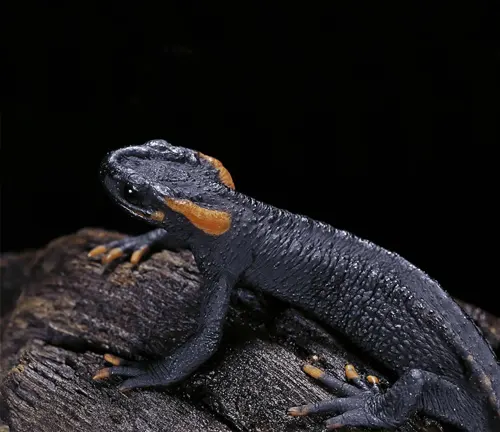
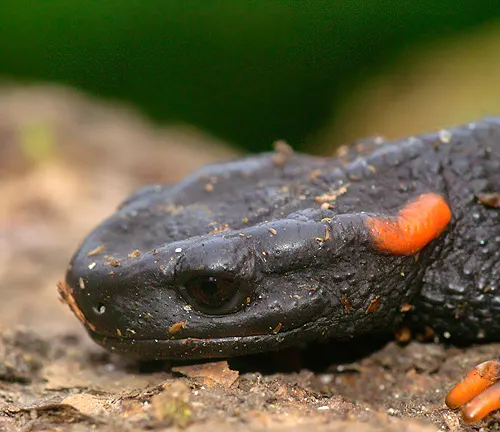
Head and Eyes
The newt has a broad, flat head with prominent eyes that protrude slightly. Its eyes are adapted to low-light conditions, aiding in nocturnal activity and hunting.
Limb Structure
It has well-developed limbs that end in distinct fingers and toes, lacking webbing, which are more suited for a life spent both in water during breeding season and on land. The toes have slightly rounded tips, aiding in their grip on wet surfaces and during movement through their environment.

Habitat and Ecology
The Taliang Knobby Newt is a highly habitat-specific species, found in cool, humid montane forests. It prefers slow-moving or stagnant water bodies for breeding, including ponds, marshes, and slow streams. The surrounding forest provides essential cover and feeding grounds, where the newts hunt for a variety of invertebrates. The species is most active during the rainy season, which coincides with its breeding period.
Morphology
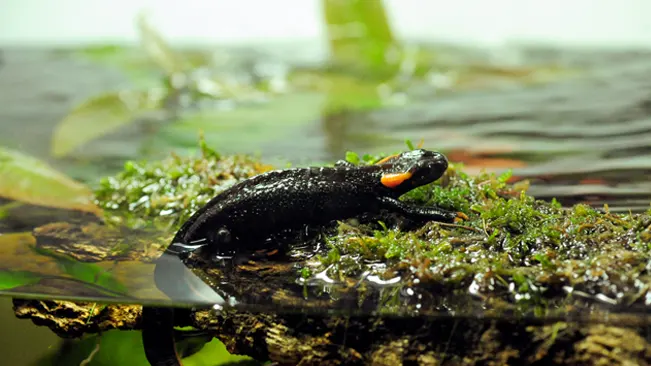
One of the most striking features of the Taliang Knobby Newt is its appearance. Adults typically exhibit a dark brown to black dorsal coloration, contrasted by vibrant orange to red markings along the sides of the body and limbs. The skin is characterized by prominent nodules or “knobs,” especially along the spine, giving the species its common name. These physical adaptations are not merely aesthetic; they play a critical role in predator deterrence and camouflage within their natural habitat.
Diet and Feeding
The diet of the Taliang Knobby Newt (Tylototriton taliangensis) is carnivorous and primarily consists of a wide array of invertebrates, reflecting the species’ adaptability and the rich biodiversity of its habitat within the montane and subalpine forests of the Taliang Mountains. These newts are adept hunters, utilizing both ambush and active foraging strategies to secure their prey, which includes insects, worms, crustaceans, and other small invertebrates found in their moist, forested environment.

Insects, such as beetles, flies, and moths, make up a significant portion of their diet. These are often caught by the newts through a combination of stealth and quick movement, as the newts are able to remain motionless for extended periods before striking swiftly at passing prey. Earthworms and other soft-bodied invertebrates provide essential nutrients and are a favorite due to their abundance within the leaf litter and soil. The newts also consume small crustaceans, which they find in the shallow waters of their breeding ponds or streams, adding diversity to their diet.
Behavior
Little is known about the specific behaviors of the Taliang Knobby Newt due to its elusive nature and the challenges of studying amphibians in their natural habitats. However, like many salamandrids, it is presumed to have a complex life cycle involving both aquatic larval and terrestrial adult stages. Breeding involves aquatic courtship displays and the deposition of eggs on submerged vegetation.
Nocturnal Activity:
Like many newts, the Taliang Knobby Newt is primarily nocturnal, being most active during the night. This behavior helps it avoid daytime predators and reduces the risk of desiccation.
Seasonal Breeding:
Breeding activities are closely tied to the rainy season, which provides optimal conditions for egg laying and larval development in aquatic environments.
Aquatic Courtship
During the breeding season, adults migrate to ponds, slow streams, or marshes where they engage in aquatic courtship rituals to attract mates.
Egg Laying in Water
Females lay their eggs in water, attaching them to submerged vegetation or other underwater structures, where they remain until hatching.
Predatory Feeding
The Taliang Knobby Newt is carnivorous, feeding on a variety of invertebrates such as insects, worms, and small crustaceans. Its feeding strategy involves both active hunting and ambush predation.
Territoriality
During the breeding season, males may exhibit territorial behavior, defending specific areas from rivals to increase their chances of mating success.
Camouflage and Avoidance
Outside of the breeding season, these newts rely on their dark, knobby skin to blend into the forest floor and leaf litter, using camouflage as a primary means of predator avoidance.
Hibernation
In response to the cold temperatures of their montane habitats, Taliang Knobby Newts may undergo a period of hibernation or reduced activity during the colder months to conserve energy.
Larval Development
After hatching, larvae undergo an aquatic phase where they develop in the water before metamorphosing into terrestrial juveniles. This dual-phase life cycle is typical of many amphibians and is crucial for their development and survival.
Use of Microhabitats
To maintain the moist skin necessary for their survival, Taliang Knobby Newts utilize microhabitats within their environment, such as under rocks, logs, or leaf litter, which offer protection from desiccation and temperature extremes.
Scientific and Educational Significance
The study of the Taliang Knobby Newt offers valuable insights into the biodiversity and evolutionary processes of amphibians in China’s montane ecosystems. As a bioindicator, the health of its populations can reflect the overall health of its habitat, making it an important species for ecological monitoring. Additionally, its unique characteristics make it a subject of interest in herpetology and conservation biology, highlighting the need for continued research and education on amphibians and their role in global biodiversity.
Conservation Status
The conservation status of the Taliang Knobby Newt is of significant concern. Classified as vulnerable by the International Union for Conservation of Nature (IUCN), the species faces threats from habitat destruction, pollution, and the illegal pet trade. Conservation efforts are critical to ensuring the survival of this species, including habitat protection, pollution control, and research into its biology and ecology to inform conservation strategies.
Different Species
Himalayan Newt or Asian Crocodile Newt
(Tylototriton verrucosus) is distinguished by its textured, warty skin and the striking orange markings that adorn its dark body, offering a stark visual contrast. This species inhabits a wide range across the Himalayan region, thriving in cool, moist environments that mirror the rich biodiversity of this mountainous area.
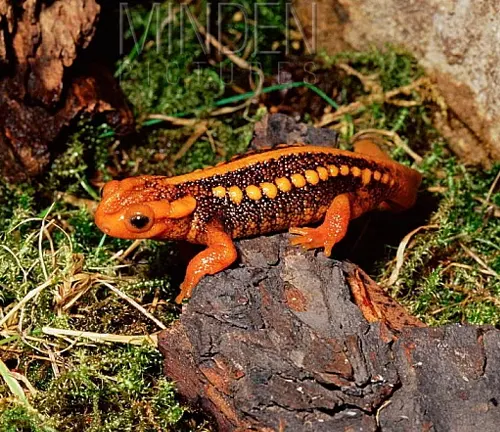
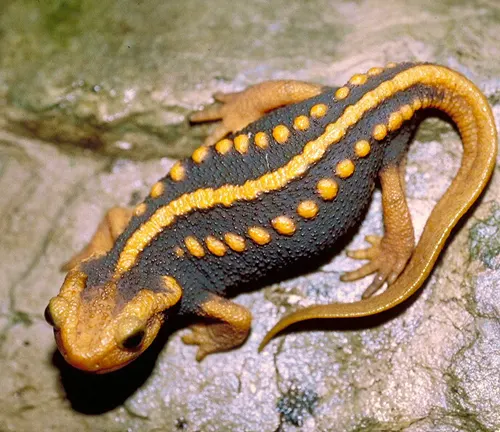
Emperor Newt or Mandarin Newt (Tylototriton shanjing)
captivates observers with its bright orange and contrasting black coloration, a feature that makes it one of the most visually striking amphibians. Native to the lush, biodiverse landscapes of Yunnan Province in China, this species has adapted to thrive in the region’s humid montane forests, where its distinctive colors serve as a warning to potential predators.
Black Knobby Newt (Tylototriton asperrimus)
is characterized by its dark, almost uniform coloration, blending seamlessly with the damp forest floor and rocky streams where it resides. Its rough, textured skin, dotted with knob-like protrusions, provides an added layer of camouflage in its native habitats throughout China, making it a master of concealment in the wild.
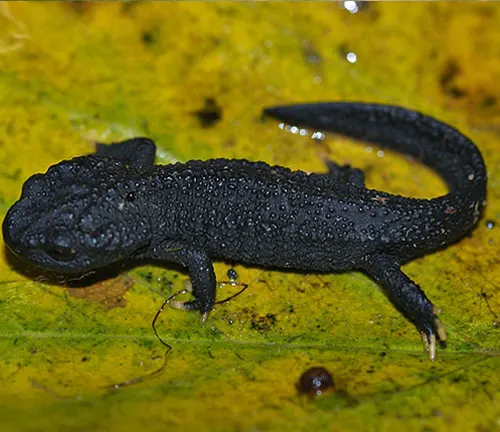

Guizhou Newt or Kweichow Knobby Newt (Tylototriton kweichowensis)
boasts a distinctive palette of dark and light colors, creating a striking appearance that mirrors the diverse landscape of its home. Endemic to the Guizhou province of China, this species thrives in the province’s unique montane habitats, where its vibrant coloration blends with the natural mosaic of the forest floor.
Angular-headed Newt or Crocodile Newt (Tylototriton anguliceps)
is immediately recognizable by its unique, sharply angled head and the striking interplay of brown, black, and orange hues across its body. Native to the forested mountain regions of Thailand and Myanmar, this species has adapted to life in cool, moist environments, where its vivid coloration serves both as camouflage and a warning signal to predators.

Conclusion
The Taliang Knobby Newt is a remarkable species that embodies the rich biodiversity of China’s mountainous regions. Its study and conservation are essential not only for the species itself but also for the broader ecological health of its habitat. As we advance our understanding of these unique creatures, we underscore the importance of preserving the natural world and its myriad inhabitants for future generations.
Frequently Asked Questions (FAQs)
- What is a Taliang Knobby Newt?
The Taliang Knobby Newt is a species of salamander in the family Salamandridae, known for its distinctive knobby skin and vibrant coloration, native to the Taliang Mountains in Sichuan, China. - Why is it called “Knobby”?
It’s called “Knobby” due to the pronounced nodules or knobs along its back, which give it a unique texture and appearance. - What does the Taliang Knobby Newt eat?
This newt is carnivorous, feeding on insects, worms, and small invertebrates found in its montane forest habitat. - Where does the Taliang Knobby Newt live?
It inhabits the montane and subalpine forests of the Taliang Mountains, preferring moist environments near slow-moving water bodies at elevations of 2,400 to 2,800 meters. - Is the Taliang Knobby Newt endangered?
The Taliang Knobby Newt is considered vulnerable due to habitat destruction, pollution, and the illegal pet trade, which threaten its survival. - How does the Taliang Knobby Newt reproduce?
Breeding occurs in water during the rainy season, where females lay eggs on submerged vegetation. The eggs hatch into aquatic larvae, which eventually metamorphose into terrestrial adults. - How long do Taliang Knobby Newts live?
While specific lifespan data is scarce, many newt species can live up to 10 years or more in the wild, depending on environmental conditions and predation pressures. - What time of day are Taliang Knobby Newts most active?
They are primarily nocturnal, being most active at night when they hunt for food and avoid predators. - Can I keep a Taliang Knobby Newt as a pet?
While they are sometimes found in the pet trade, keeping Taliang Knobby Newts as pets is discouraged due to their vulnerable status and the specific care requirements they need to thrive. - What is being done to protect the Taliang Knobby Newt?
Conservation efforts include habitat protection, pollution control, and research into the species’ biology to inform strategies that can help ensure its survival.


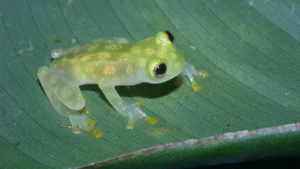

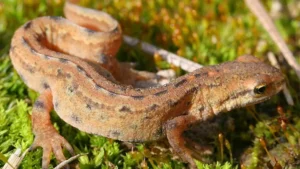

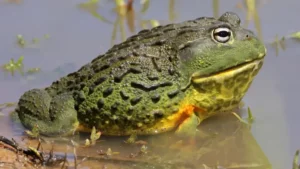

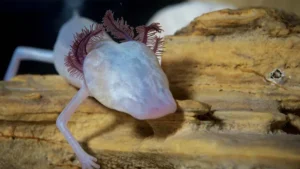

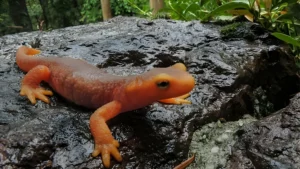
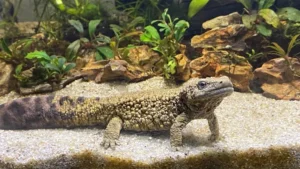


Leave your comment